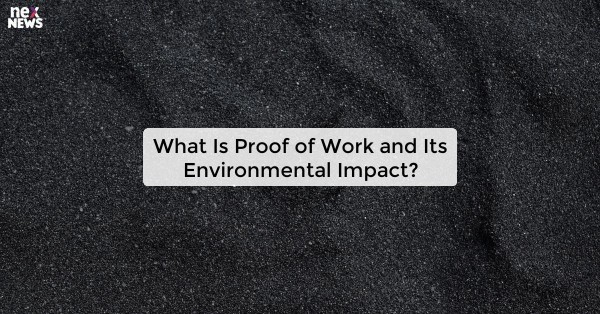Proof of Work: Understanding the Concept
Proof of Work is a consensus mechanism used in blockchain technology to validate and secure transactions on a network. In simple terms, it requires participants, known as miners, to solve complex mathematical puzzles in order to create new blocks and add them to the blockchain. This process acts as a form of competition among miners, with the first one to solve the puzzle earning the right to add the new block and receive a reward in the form of cryptocurrency.
The main idea behind Proof of Work is to require participants to invest computational power and resources in order to contribute to the network and maintain its security. By making it difficult and time-consuming to solve these puzzles, the network ensures that only legitimate transactions are added to the blockchain and that malicious actors are deterred from attempting to manipulate the system. This concept of "work" serves as a way to establish trust and consensus in a decentralized manner within the cryptocurrency ecosystem.
The Function of Proof of Work in Cryptocurrency
Proof of Work is a crucial concept in the world of cryptocurrency. It serves as a consensus mechanism that validates transactions and secures the network by requiring participants to solve complex mathematical puzzles. By proving that computational work has been done, miners are able to add new blocks to the blockchain, ensuring the integrity and immutability of the distributed ledger.
Through the process of mining, participants compete to be the first to solve the cryptographic puzzle, with the winner receiving a reward in the form of newly minted coins. This incentivizes miners to contribute their computational power to the network, maintaining its security and efficiency. Additionally, Proof of Work helps prevent double-spending and other fraudulent activities by making it computationally expensive to tamper with the blockchain's history.
The Energy Intensive Nature of Proof of Work
Proof of Work, the consensus mechanism used in cryptocurrencies like Bitcoin, has garnered both praise and criticism for its energy-intensive nature. The process of mining, which involves solving complex mathematical puzzles to validate transactions, requires an immense amount of computational power. As a result, miners compete to be the first to solve these puzzles, leading to a significant consumption of electricity.
This energy-intensive aspect of Proof of Work has raised concerns about its environmental impact. Critics argue that the massive energy consumption associated with mining contributes to carbon emissions and exacerbates the already pressing issue of climate change. As the popularity of cryptocurrencies continues to rise, so does the demand for mining operations, further intensifying the strain on energy resources and the environment.
Environmental Concerns Associated with Proof of Work
Proof of Work, the consensus mechanism utilized in many cryptocurrency networks such as Bitcoin and Ethereum, has been under scrutiny due to its significant environmental impact. The energy-intensive nature of Proof of Work requires miners to solve complex mathematical puzzles in order to validate transactions and secure the network. As a result, vast amounts of computational power are consumed, leading to high electricity consumption and carbon emissions.
The environmental concerns associated with Proof of Work stem from the reliance on energy-intensive mining processes, which often rely on fossil fuel-generated electricity. This has raised questions about the sustainability of cryptocurrency networks and their contribution to climate change. Additionally, the increasing popularity of cryptocurrencies has led to a surge in mining activities, further exacerbating the environmental impact of Proof of Work consensus mechanisms.
Comparing Proof of Work to Other Consensus Mechanisms
Proof of Work is a consensus mechanism used in many cryptocurrencies, including Bitcoin. It requires participants, known as miners, to solve complex mathematical puzzles in order to validate transactions and create new blocks on the blockchain. This process is energy-intensive and can lead to high electricity consumption, as miners compete to be the first to solve the puzzle and receive rewards.
In contrast, Proof of Stake is another popular consensus mechanism that does not require miners to solve complex puzzles. Instead, participants are chosen to validate transactions based on the number of coins they hold and are willing to "stake" as collateral. This method is considered more energy-efficient compared to Proof of Work, as it does not rely on solving computationally intensive problems. Additionally, Proof of Stake is believed to be more secure, as participants are incentivized to act honestly in order to protect their staked assets.
